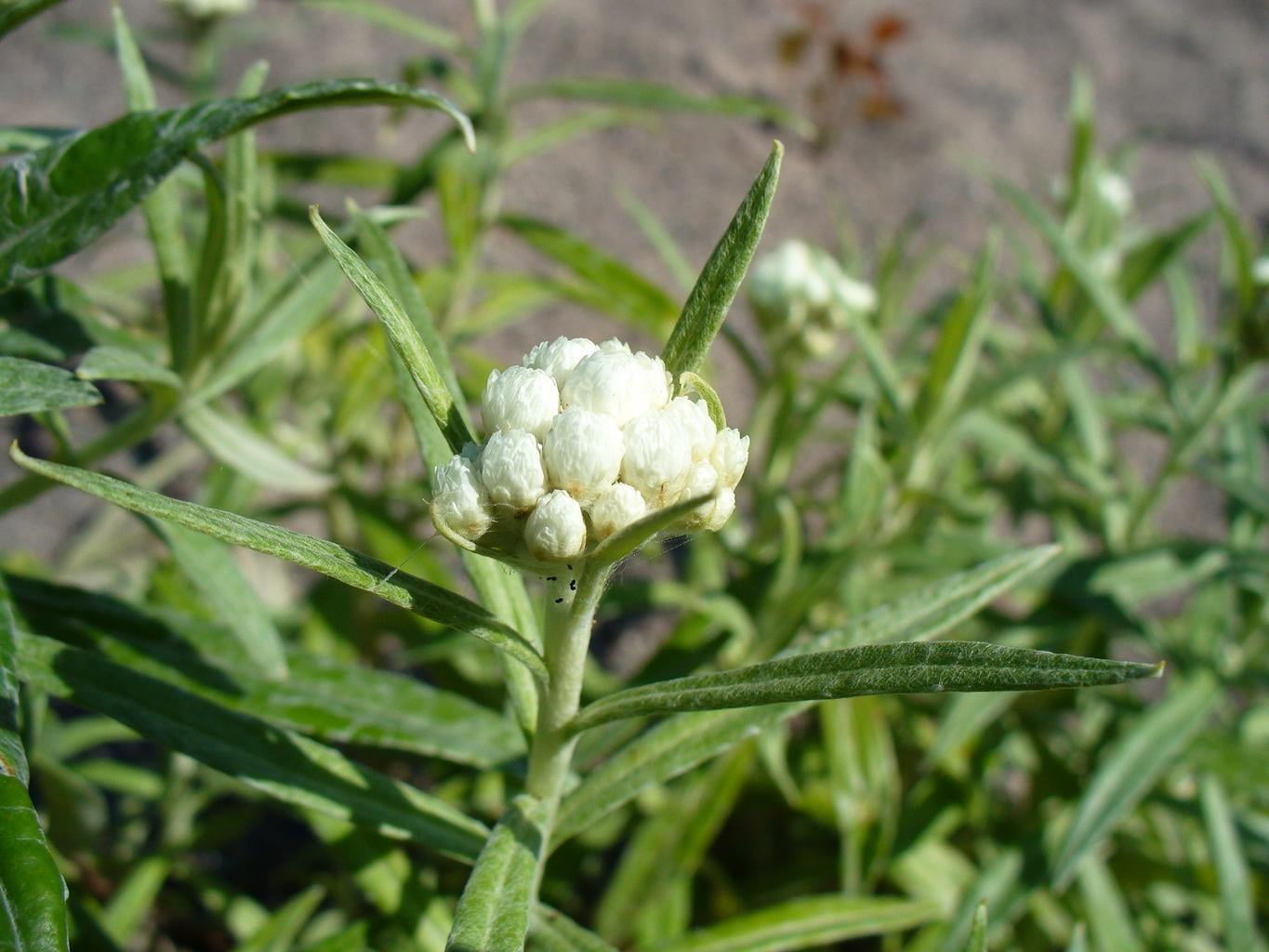Anaphalis margaritacea
Pearly Everlasting Description:
Anaphalis margaritacea, commonly known as pearly everlasting, is a herbaceous perennial plant that belongs to the Asteraceae family. It is native to North America and is known for its distinctive, white, papery flowers that resemble little pom-poms. The plant typically grows up to 2-3 feet tall and has a woody base with herbaceous stems. Its leaves are lance-shaped and covered in fine hairs, giving them a silvery-gray appearance. Anaphalis margaritacea is a drought-tolerant plant that thrives in full sun and well-drained soil. It is a great addition to natural gardens and is often used in cut flower arrangements. The plant is also known for its medicinal properties and is used in traditional medicine for its anti-inflammatory and anti-microbial properties. With its unique characteristics and ecological benefits, Anaphalis margaritacea is a valuable and versatile plant.
Native Range:
Pearly everlasting can be found across most of the United States, from western states such as California, all the way to Maine. Additionally, the plant is commonly found in north central states such as Minnesota and Wisconsin.
Standard Plant Information:
Plant Height: 1' - 3'
Bloom Time: July - October
Preferred Habitat: Does well in a variety of conditions ranging from part-shade to full sun. From dry prairies to roadsides and even woodlands.
Sowing:
For most homeowners, the best option is to scatter seed on the ground by hand broadcasting at a minimum of 16-64 pls ounces per acre. For even coverage, we recommend that you broadcast seed in perpendicular rows across the site to ensure even coverage.
You’ll want to broadcast any grass seed first, which will get raked into the soil lightly. Next, it is ideal to mulch the area lightly with either a clean (no seed) straw or preferably with our native Little Bluestem straw, sold at our retail garden centers. After a light mulching is complete, now it’s time to broadcast your native wildflower seeds, which should not be raked into the soil. A good rain or watering is sufficient to cover the seed.
Planting:
Simply dig a hole in the soil slightly larger than the plant’s roots. Ensure that the soil line of the plant is maintained during the transfer (i.e. the plant should be at the same level with the ground as it was in the pot). Pack any loose dirt back around the plant and make sure you water it well the same day to ensure it has the best chance of survival.








